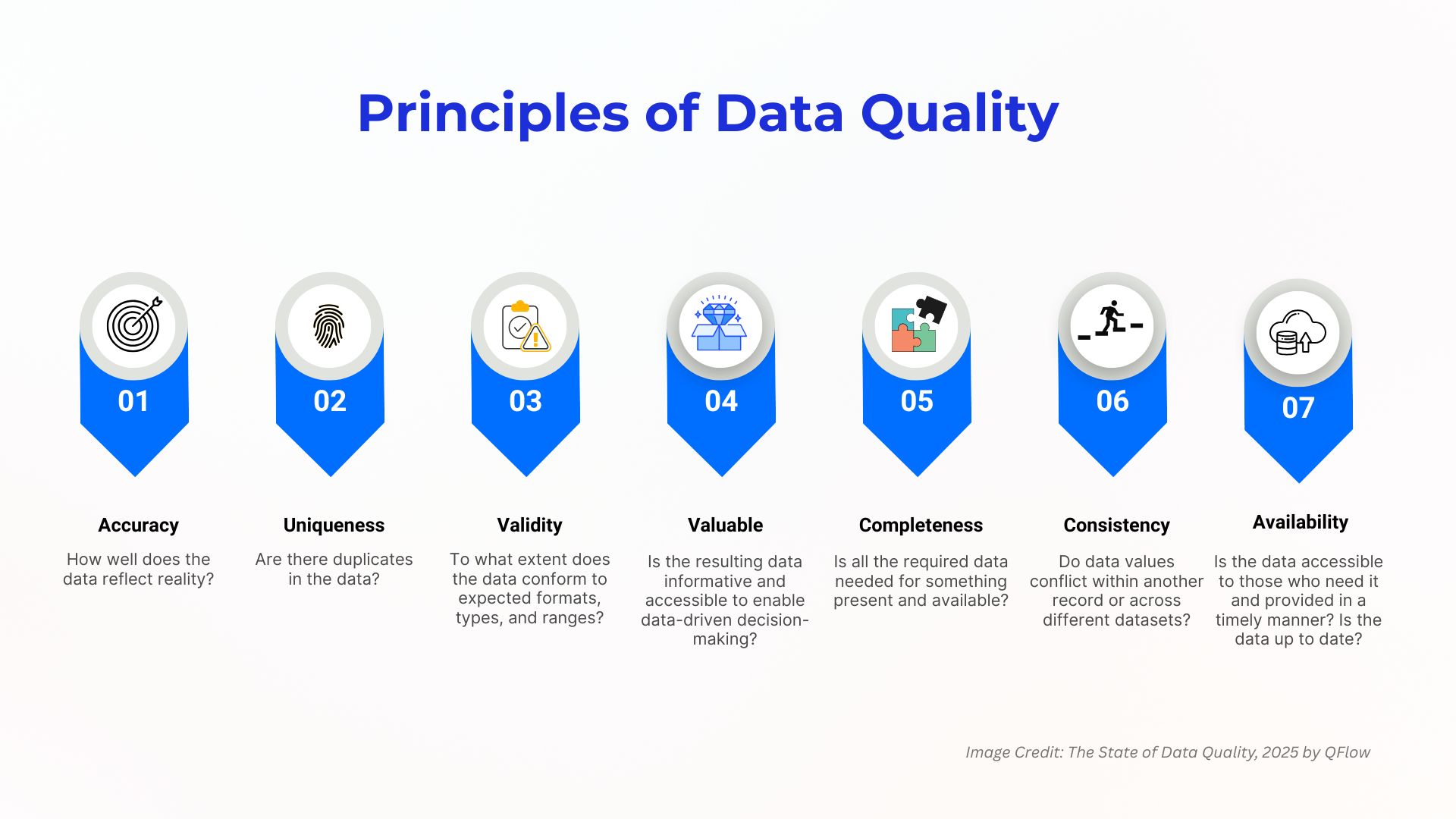October 9, 2025

In an effort to digitise an industry, often data quality is forgotten in the quest for data quantity. Nothing comes to fruition without relevant data. This is rapidly becoming true for the construction industry that is at the cusp of a digital transformation. Construction companies work with a lot of data and this data, more often than not, is unstandardised or is sitting across various departments in silos - not being exploited for the maximum benefit to expedite future workflows.
Poor data, which is to say, data that is outdated, incomplete, or inconsistent leads to flawed decisions, lost margins and overall might risk the project.
Thankfully several strategies exist to unlock digital workflows for better, more efficient data usage that can ultimately be leveraged to impact the business positively. Here's a quick look.
What’s at Stake Today?
- Globally, $1.84 trillion was lost to bad construction data in 2020.
- One third of poor project decisions stem directly from poor data quality.
- Materials make up 40% of the budget and hold 90% of carbon impacts - yet over 95% of documentation is often incomplete.
- Tragic project failures often link back to information gaps on materials and compliance.
(source: Autodesk 2020)
Building an AI-Ready Digital Foundation
At Temelion, we harness the power of artificial intelligence to streamline complex, repetitive workflows in pre-construction and technical delivery, enabling engineers to move faster, decide smarter, and focus on actual engineering. Our journey begins with the pain points of engineers and the data they work with.
The foundation to human-AI collaboration lives in structured data. Some quick wins in this sector look like this:
- Unified digital project space: All stakeholders work from live plans and documents in one place, with everyone trained and confident in their software.
- Site-to-office connection: Shared digital systems that update in real-time ensure seamless field-to-HQ collaboration.
- Cloud access: Documents, photos, delivery logs and forms are available anytime, from anywhere.
With this seamless foundation, job-site data becomes clean, accessible, and AI-ready for further automation if needed. That’s when AI starts to identify patterns, flag risks, and support faster, better decision-making.
What Does Good Data Look Like?
Where do we even begin in this quest for clean data? Perhaps a quick framework for early weeding of data might look like the following. (Reference: The State of Data Quality in Construction, 2025)

It’s Not Just About Tech: Change Management Within Teams for Maximum Impact
Digital tools alone won't fix everything: the ways of collaborating intra-teams and intra-departments needs to be more efficient for maximum impact. The real barriers are standardisation, data governance, skills, and collaboration:
- Standardisation: While this is often easier said than done, uniform data collection standards and industry-wide frameworks reduce confusion and enable benchmarking.
- Data Governance: Who owns what data is often unclear within organisations. Clear roles, responsibilities, and IP protections are vital, especially as AI-based analytics become mainstream.
- Skills Training: Upskilling site teams and supply chains is critical. Teams need to get acquainted with the tool enough that it dictates the day-to-day comfort of usage.
- Breaking Silos: Transparent data-sharing and collaboration up and down the chain are essential for reliable reporting and safer projects.
Best Practices for Building Design Engineers
Want to motivate your team to start somewhere? Here's a few ideas:
- Push for more complete, standardised data from suppliers and contractors.
- Prioritise training and digital tools for better data collection and reporting.
- Demand transparent, real-time access for safe, efficient, and sustainable projects.
- Recognise that high-quality data is foundational, not optional, for meeting the industry’s safety, sustainability, and profitability goals.
Temelion leverages AI to automate and simplify complex technical documentation and deliverables for building design engineers, ensuring precision, compliance, and faster project delivery. Book a demo, here.
References and Credits
- Qflow, “State of Data Quality in Construction,” Jan 2025
- RICS, “Artificial Intelligence in Construction,” Sep 2025
- StartUs Insights, “AI in Construction Strategic Guide” May 2025
- EU Digitalisation & AI Initiatives, Mar 2025
- Civils.ai, “Construction Generative AI Guidebook,” Jan 2025
- Gather Insights, “How AI Is Transforming Construction Site Diaries,” Dec 2024
